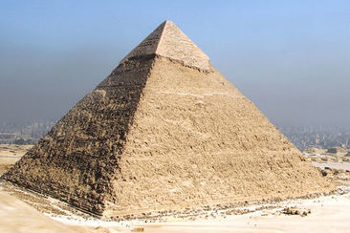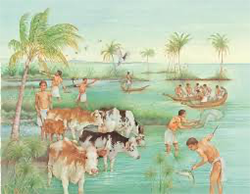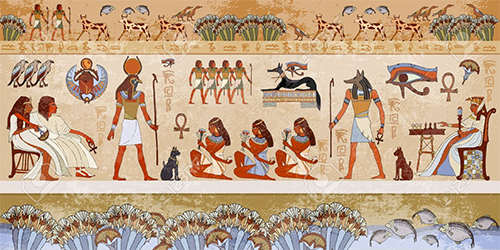A History of Ancient Egypt
Part 1: Beginnings and Basics People have been living in what is now Egypt for a very long time. During the course of 3,000 years, the civilization became one of the greatest in world history, featuring famous leaders, well-known building projects like the Pyramids, a vast and complicated religious system, a picture-based writing system, and a tradition of riches borne of both economics and conquest. 
Small settlements sprang up along the Nile River, using the mighty river for water, food (in the form of fish), and transportation. The Egyptians also depended on the river for its kemet, the fertile black soil that remained when the mighty river flooded annually. (Kemet was another name for the land itself and was, in fact, how the ancient people referred to their homeland.) They built reservoirs to hold water and eventually developed a form of irrigation, digging canals and ditches to provide water flow from the Nile inland and also from the reservoirs to where it was needed. 
The population was large enough to accommodate a large-scale civilization more than 3,000 years ago. Many people in Egypt lived in the north, known as Lower Egypt; many other people lived in the south, known as Upper Egypt. The northern lands were known as Lower Egypt because of their association with the mouth of the Nile River, which originated in the south (Upper Egypt) and ran northward to the Mediterranean Sea (through Lower Egypt). Agriculture was a major industry in Ancient Egypt and a major part of life for the people who lived there. The Ancient Egyptians grew many things for food, including grains such as wheat and barley; pulses like beans, chickpeas, and lentils; fruits such as grapes, melons, plums, and pomegranates; and vegetables such as cucumbers, leeks, lettuce, onions, peas, radishes, squashes, and turnips. Another important and tasty crop was figs.  Religion in Ancient Egypt ran through every fabric of life. The people saw the whims of various deities in the variations in the weather, in the rise and fall of kings and empires, and in the smallest decisions of everyday life. A variety of religious festivals punctuated the calendar year. The residents of a town or city commonly adopted one god or goddess as their patron and venerated him or her with one or more temples. All of this focus on religion necessitated a large group of priests and other religious officials, whose job it was to tend to the temples and the ceremonies. Above it all sat the king, the pharaoh, who was the gods' representative on Earth. Next page > Lords of the Two Lands > Page 1, 2, 3
|
|
Social Studies for Kids
copyright 2002–2025
David White




